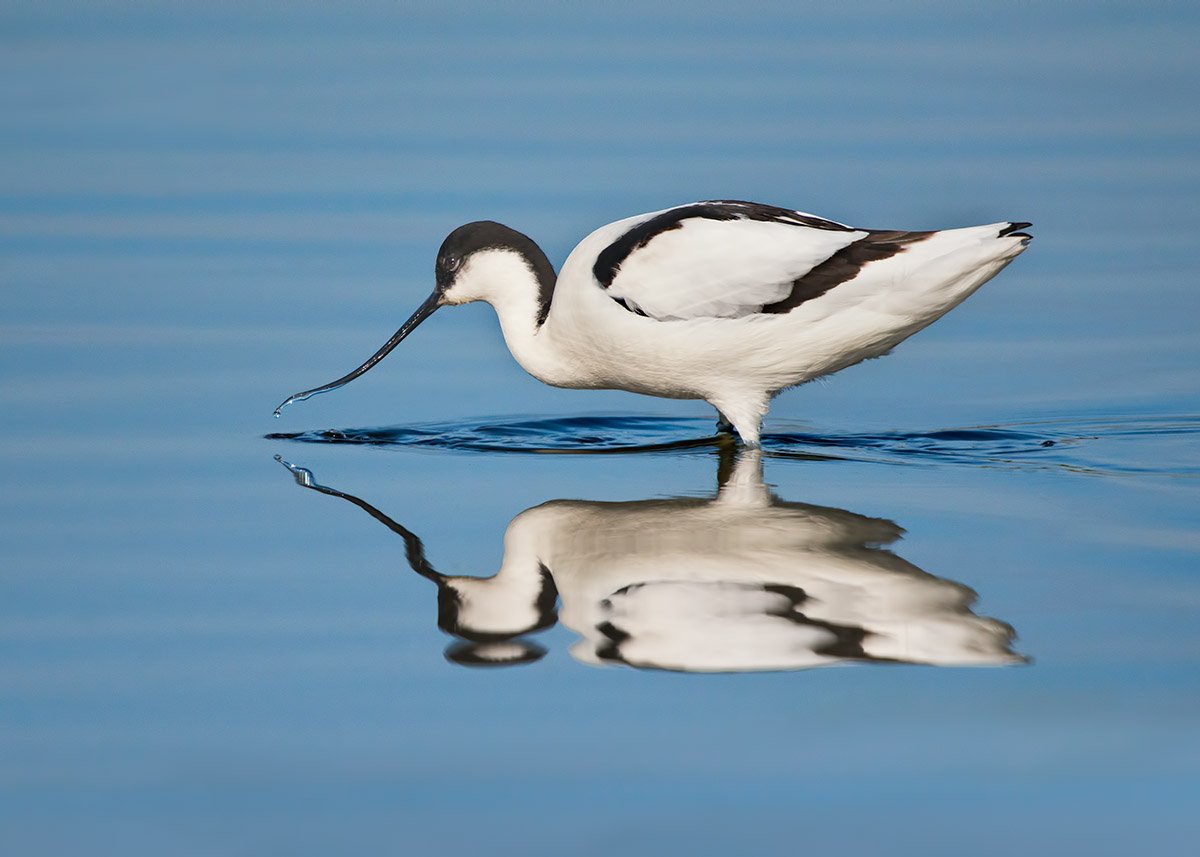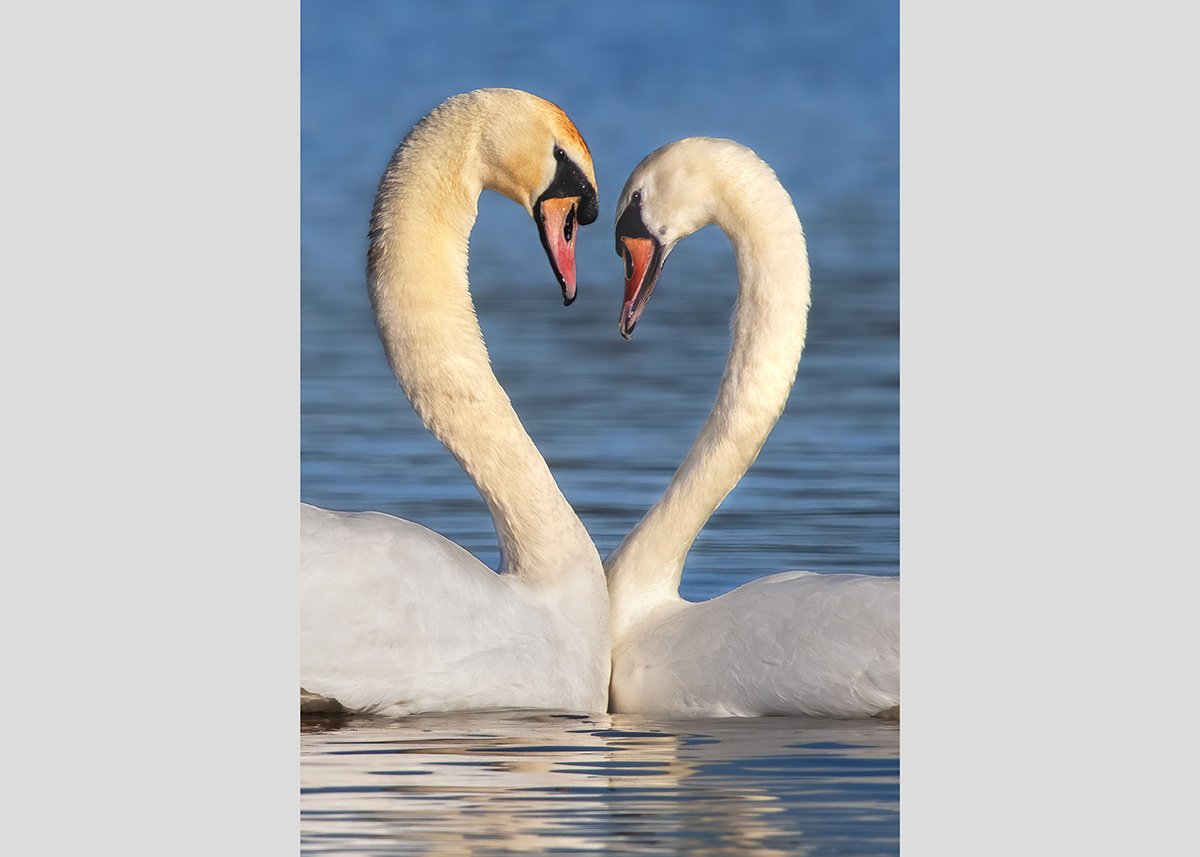 Image 1 of
Image 1 of


Avocet
The avocet, with its distinctive upturned bill and elegant form, is a striking shorebird that frequents coastal habitats around the world. Here's a brief overview:
Appearance: Avocets are characterized by their long, slender legs and necks, contrasting black and white plumage, and upward-curving bills. During the breeding season, their plumage may take on a rusty or cinnamon hue, particularly on the head and neck.
Habitat: Avocets are commonly found in shallow coastal waters, estuaries, salt marshes, and mudflats. They prefer habitats with ample mud or sand for foraging and nesting, often congregating in large flocks during migration and winter months.
Behaviour: Avocets are known for their distinctive feeding behaviour, in which they sweep their long, slender bills through the water or mud, capturing small invertebrates such as crustaceans, insects, and worms. They may also probe into the substrate to extract prey.
Breeding: Avocets are monogamous and form breeding pairs during the breeding season. They construct shallow scrapes in the ground for nesting, often lined with grasses or other vegetation. Both parents participate in incubating the eggs and caring for the young.
Conservation: While some populations of avocets are stable, others face threats from habitat loss, pollution, and disturbance. Conservation efforts focus on protecting key breeding and feeding areas, as well as raising awareness about the importance of coastal habitats for shorebird species.
Overall, the avocet is a captivating and iconic bird of coastal ecosystems, admired for its beauty and graceful presence along the shoreline.
The avocet, with its distinctive upturned bill and elegant form, is a striking shorebird that frequents coastal habitats around the world. Here's a brief overview:
Appearance: Avocets are characterized by their long, slender legs and necks, contrasting black and white plumage, and upward-curving bills. During the breeding season, their plumage may take on a rusty or cinnamon hue, particularly on the head and neck.
Habitat: Avocets are commonly found in shallow coastal waters, estuaries, salt marshes, and mudflats. They prefer habitats with ample mud or sand for foraging and nesting, often congregating in large flocks during migration and winter months.
Behaviour: Avocets are known for their distinctive feeding behaviour, in which they sweep their long, slender bills through the water or mud, capturing small invertebrates such as crustaceans, insects, and worms. They may also probe into the substrate to extract prey.
Breeding: Avocets are monogamous and form breeding pairs during the breeding season. They construct shallow scrapes in the ground for nesting, often lined with grasses or other vegetation. Both parents participate in incubating the eggs and caring for the young.
Conservation: While some populations of avocets are stable, others face threats from habitat loss, pollution, and disturbance. Conservation efforts focus on protecting key breeding and feeding areas, as well as raising awareness about the importance of coastal habitats for shorebird species.
Overall, the avocet is a captivating and iconic bird of coastal ecosystems, admired for its beauty and graceful presence along the shoreline.
The avocet, with its distinctive upturned bill and elegant form, is a striking shorebird that frequents coastal habitats around the world. Here's a brief overview:
Appearance: Avocets are characterized by their long, slender legs and necks, contrasting black and white plumage, and upward-curving bills. During the breeding season, their plumage may take on a rusty or cinnamon hue, particularly on the head and neck.
Habitat: Avocets are commonly found in shallow coastal waters, estuaries, salt marshes, and mudflats. They prefer habitats with ample mud or sand for foraging and nesting, often congregating in large flocks during migration and winter months.
Behaviour: Avocets are known for their distinctive feeding behaviour, in which they sweep their long, slender bills through the water or mud, capturing small invertebrates such as crustaceans, insects, and worms. They may also probe into the substrate to extract prey.
Breeding: Avocets are monogamous and form breeding pairs during the breeding season. They construct shallow scrapes in the ground for nesting, often lined with grasses or other vegetation. Both parents participate in incubating the eggs and caring for the young.
Conservation: While some populations of avocets are stable, others face threats from habitat loss, pollution, and disturbance. Conservation efforts focus on protecting key breeding and feeding areas, as well as raising awareness about the importance of coastal habitats for shorebird species.
Overall, the avocet is a captivating and iconic bird of coastal ecosystems, admired for its beauty and graceful presence along the shoreline.
Printed on Epson Premium glossy paper using Epson UltraChrome inks, your print is guaranteed to showcase incredible quality with rich, vibrant colors. Thanks to Epson's advanced ink technology, your print will retain its stunning appearance for years to come.
Each detail of your image will be brought to life with remarkable clarity and precision, capturing the essence of the scene as if you were there in person. Whether it's the vivid hues of a sunset or the intricate details of a landscape, every aspect will be rendered with breathtaking accuracy.
Standard UK shipping is included in the price, ensuring that your print arrives safely and promptly. For customers located in the UK Highlands and Islands or overseas, please feel free to contact me for a shipping quote tailored to your location.
Experience the beauty of your favorite scenes in stunning detail with a print that exceeds expectations, made possible by Epson UltraChrome inks and premium glossy paper.





